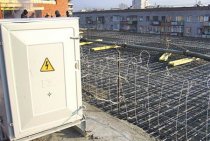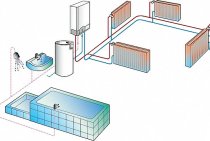Raw material for polypropylene production
The feedstock for the production of polypropylene is propylene.
Propylene is isolated from the propane-propylene fraction obtained by cracking and pyrolysis of petroleum hydrocarbons. The separated propylene fraction, containing about 80% propylene, is subjected to additional distillation; as a result, propylene of 98-99% concentration is obtained.
Propylene of high purity, not containing moisture, oxygen, carbon oxides and other impurities that poison the polymerization catalyst, is obtained by additional purification.
The presence of saturated hydrocarbons of ethane and propane in propylene does not affect the process of polymer formation. This is the basis for the technological process of polymerization of propylene in the form of a propane-propylene fraction containing 30% propylene and 70% propane, developed in the USSR, in which propane is a solvent and is used to remove the heat of reaction.
Polymerization of propylene
The polymerization of propylene in the presence of Ziegler-Natta catalysts proceeds according to the ion-coordination mechanism.
During the polymerization of propylene, the resulting polypropylene macromolecule consists of elementary units of regularly alternating secondary and tertiary carbon atoms.
Each tertiary carbon atom is asymmetric and can have one of two (D- or L-) steric configurations. By selecting the polymerization conditions and the catalyst, it is possible to obtain polypropylene containing mainly one of the given structures. Such polymers are called isotactic. Polymers in the chains of which alternating asymmetric carbon atoms of the D- and L-configuration are called: syndiotactic. In atactic polypropylene, the asymmetric D- and L-configuration atoms are arranged randomly. Isotactic and syndiotactic polymers are collectively referred to as stereoregular polymers.
In addition, in polypropylene there are sections with a stereoblock structure containing isotactic and atactic polypropylene.
Industrially produced polypropylene is a mixture of various structures, the ratio of which depends on the process conditions. The most valuable material is a polymer with a low content of impurities of atactic and stereoblock structures.
Depending on the molecular weight and the content of the isotactic part, the properties of polypropylene vary over a wide range. Of greatest practical interest is polypropylene with a molecular weight of 80,000–200,000 and an isotactic content of 80–95%.
The content of the isotactic part in the polymer depends on the catalysts used for polymerization. A stereoregular polymer is formed only in the presence of such catalysts that have the ability to orient the elementary unit in a certain position with respect to previously attached groups. The monomer molecules are first adsorbed on the surface of the solid catalyst, oriented, and then attached to the polymer chain.
Polymerization of propylene is carried out in the presence of a catalytic complex Al(C2H5)2Cl/TiCl3 and other catalysts.
The ratio of components in the catalytic system affects the rate of polymerization and stereospecificity. At the molar ratio AlR2CI:TiCl3=2 : 1 shows the maximum activity of the catalyst, and at a ratio exceeding 3:1 - the highest stereospecificity.
Titanium trichloride exists in several crystalline modifications (α, β, γ, σ). , In the presence of titanium trichloride of the violet α-form, a polymer is obtained with the largest amount of isotactic polypropylene - 80-90%, when using titanium trichloride of the brown β-form, the resulting polymer contains only 40-50%.


